- Author Miguel Ramacey [email protected].
- Public 2023-12-17 06:11.
- Last modified 2025-01-24 21:21.
St. Paul's Cathedral in Rome is a unique architectural landmark that attracts the attention of millions of parishioners and pilgrims. Here sins are forgiven, leading the rite of the "Holy Door". Today, the temple adds to the list, which indicates the World Heritage of the planet. Consider the features of the architecture of the temple, provide advice for its visitors.
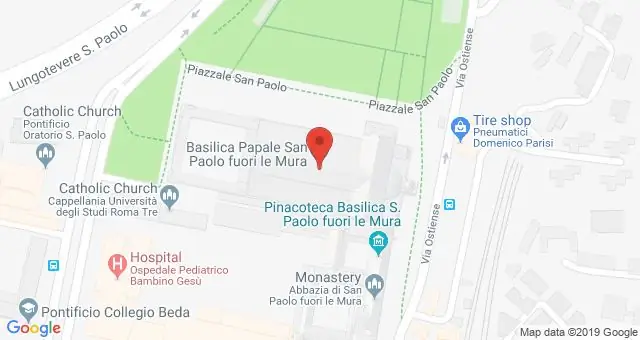
Getting to know the attraction
St. Paul's Cathedral in Rome - The Basilica of St. Paul outside the walls stands on the burial site of the Apostle Paul, about 3 km from the place called "Tre Fontane", where he was martyred and beheaded.
The tomb of the saint is under the papal altar. That is why for centuries it has always been a place of pilgrimage; since 1300 this shrine has been part of the majestic route of pilgrims who came to receive indulgence. It celebrates the ceremony of opening the Holy Door in St. Paul's Cathedral in Rome.
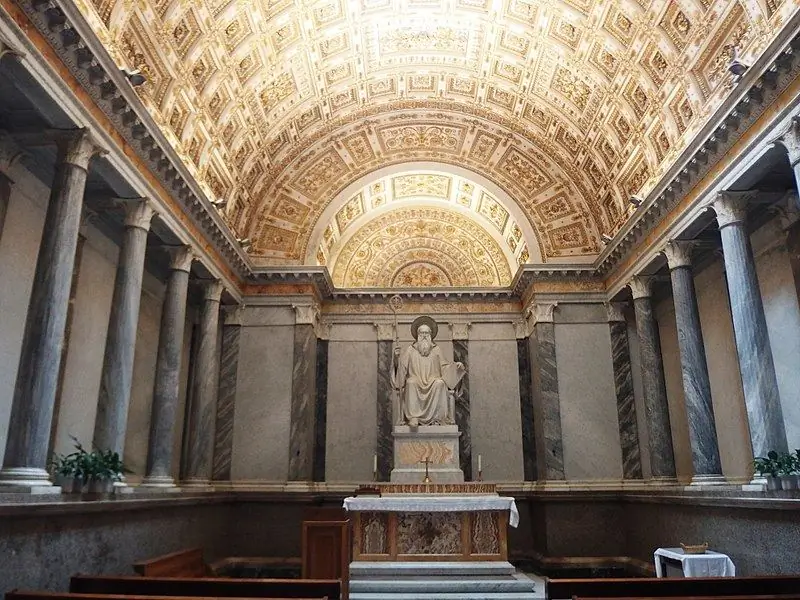
From the depths of history
From the eighth century onward, the care of the liturgy and lamp at the tomb of the apostle was entrusted to Benedictine monks in the annexed Abbey of St. Paul outside the walls. The entire complex of buildings is located on the territory of the Italian Republic.
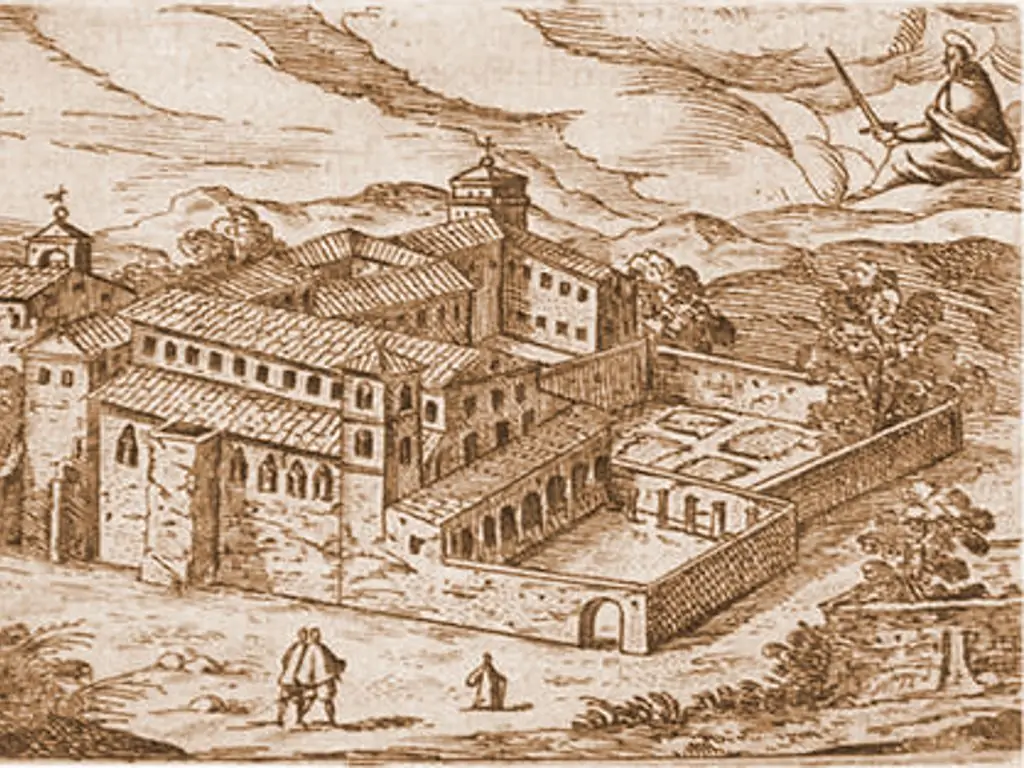
UNESCO Heritage
St. Paul's Cathedral in Rome is an institution associated with the Holy See, including the adjoining abbey. The Holy See has full and exclusive jurisdiction over the entire extraterritorial complex, as well as the prohibition of the Italian state to expropriate or tax. The place has been included in the list of UNESCO World Heritage Sites since 1980.
In front of the Basilica
The area where St. Paul's Basilica stands outside the walls, on 2nd mile of Via Ostiense, was occupied by a vast cemetery (from sub divos - "under the gods", that is, under the open sky). It has been used since the 1st century BC. e.
This was a vast cemetery that included various types of tombs, from family burials to small funerary chapels, which were often decorated with frescoes and stucco. Almost all of this burial site is still active (mostly below the level of the nearby Tiber), and it is estimated that it extends under the entire area of the basilica and surrounding areas. A small but significant part of it is visible along Via Ostiense, not far from the north vault of the basilica.
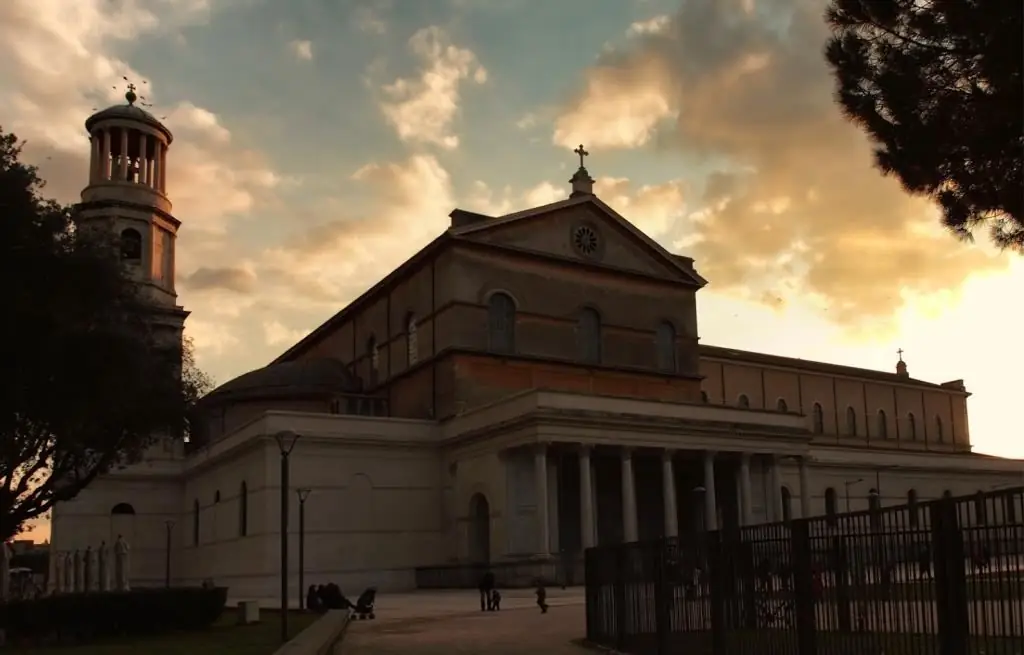
From Paul to Constantine
Emperor Nero ordered the execution of Paul. He sufferedmartyrdom after numerous tortures. Such a punishment befell the preacher for telling people about the new faith. It was these sermons that cost Paul his life. The burial place of the saint is called "Three Fountains". The legend says that after the execution, the flying head hit the ground three times. Thus, the way was opened for a new spring, which provided access to the underground springs. Pavel's burial is located 3 km from the place of his execution.
As for the tomb of Paul, it immediately became an object of veneration for the enlightened Christian community of Rome, which relatively quickly installed a small funerary monument here. Eusebius of Caesarea reports in his church history an excerpt from a letter from Gaius, presbyter under Pope Zephyrinus, who refers to the trophies located over the tomb of the apostle.
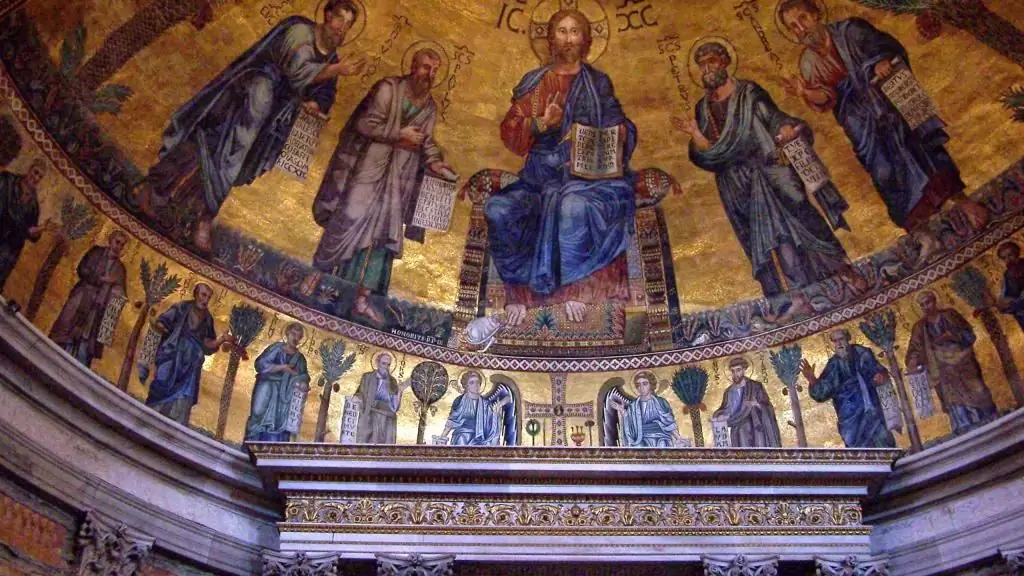
There has been continuous pilgrimage here since the first century. A small basilica was created by Emperor Constantine I, from which only the curve of the apse is visible, visible near the Central Altar. It was a small building, probably with three naves, in which, near the apse, was the tomb of Paul, decorated with a golden cross.
The Basilica of Constantine was consecrated on November 18, 324 during the reign of Pontiff Sylvester I. Today it is part of a series of similar architectural structures built by the emperor outside the city. Hence the name of the building "outside the walls".
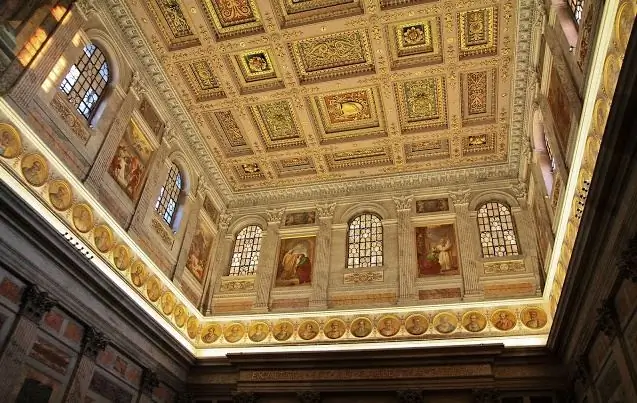
Basilica of the Three Emperors
St. Paul Outside the Walls in Rome consists of the Constantinian Basilica of San Paolo. It was much smaller than the modern Basilica of San Pietro. It was then completely rebuilt during the reigns of the emperors Theodosius I, Gratian and Valentinian II (391), and the structure would remain virtually intact until the disastrous fire of 1823. This natural disaster has befallen a large number of shrines.
The construction was entrusted to Professor Siriade, who erected a building with five naves, 80 columns and a quadriportic. These new buildings differed from the previous ones in impressive size. The basilica, which safely survived even after the fire that happened here, was consecrated by Pope Siricius in 390. Its construction was completed under Emperor Honorius in 395.
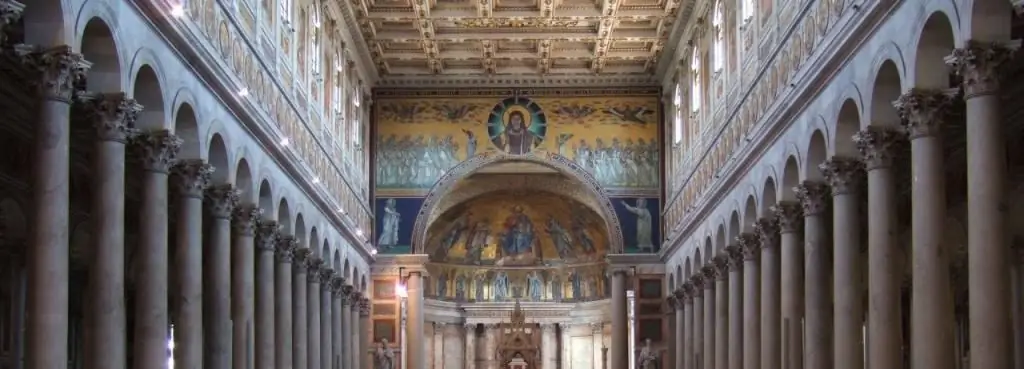
Continuation of the story
Subsequent additions, such as the triumphal arch supported by monumental columns and the magnificent mosaics that adorned it, are associated respectively with the restoration work of Galla Placidia and the intervention of Pope Leo I.
The latter made his rounds with papal portraits that ran over the arches of the central nave; some of them that survived the fire are kept in the De Rossi collection in a nearby monastery, along with others restored over the centuries.
Temple decorations
In the Leonese mosaic program there were also scenes from the Old Testament and the Acts of the Apostles on the right and left aisles respectively, and the apse arch with Christ inside the clip holding the Cross, and twelve signsApocalypse on the sides. Also here you can see images of the Holy Apostles Peter and the Apostle Paul, taken from the reconstruction after the fire.
The mosaic image of St. Peter, for many years considered part of the facade of the Vatican Basilica and preserved in the Vatican, was recognized as part of the figure of the apostle on the apse arch.
Ciborius Arnolfo di Cambio in 1285 renovated the dangerous apse and created a "habitat" - dwellings for the poorest pilgrims. Here they could rest and gain strength.
Notable details
The photo of St. Paul's Cathedral in Rome shows that in the center of the transept of the basilica, under the triumphal arch, is the Ciborium, a wonderful work in the Gothic style by Arnolfo di Cambio, who built it at the behest of the abbot Bartolomeo in 1285 in collaboration with the master named Petrus.
Made of marble, it consists of a Gothic aediculus supported by four Corinthian columns of red porphyry (replaced in 19th century restorations) flanked by four cusps that open inward with pointed arches.
At the four corners, in niches crowned with triangular tubercles, are the statues of San Paolo, San Pietro, San Benedetto and San Timoteo. Above, the sculptural work ends with a high cusp surmounted by a golden cross and supported by a small vented loggia in the Gothic style.
In the period immediately following the reopening of the rebuilt basilica after the catastrophic fire of 1823, the ciborium was covered with a large neoclassical canopy, and thendestroyed. Next to the ciborium is an Easter candle chandelier, created by Pietro Vassalletto and Nicolò d'Angelo in 1170, depicting scenes from the life of Jesus interspersed with floral motifs.
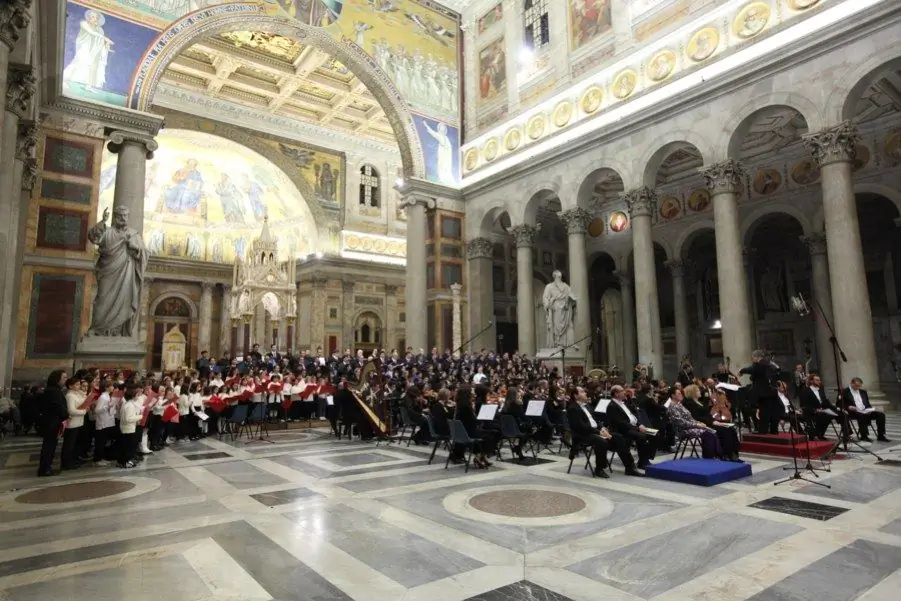
Tips for visitors
Many tourists are interested in the question of how to get to St. Paul's Cathedral in Rome. This is the southern district of the city, where the Aurelian Walls are located at a distance of two kilometers. Address: Piazzale San Paolo, 1.
The sights can be reached by metro and buses of route 23 and 769. Tram number 2 also goes here.
St. Paul's Basilica, Rome Opening Hours: daily, 7:00 am - 6:30 pm. The monastery and cloister can be accessed between 8:00 am and 6:15 pm. You can confess at the following times: 7:00 - 12:30, 16:00 - 18:30.
The opinion of the pilgrims
Reviews of St. Paul's Cathedral in Rome sound delighted. Pilgrims claim that this architectural landmark has a special atmosphere. The richness of the interior decoration, the monumental style of the building are impressive.
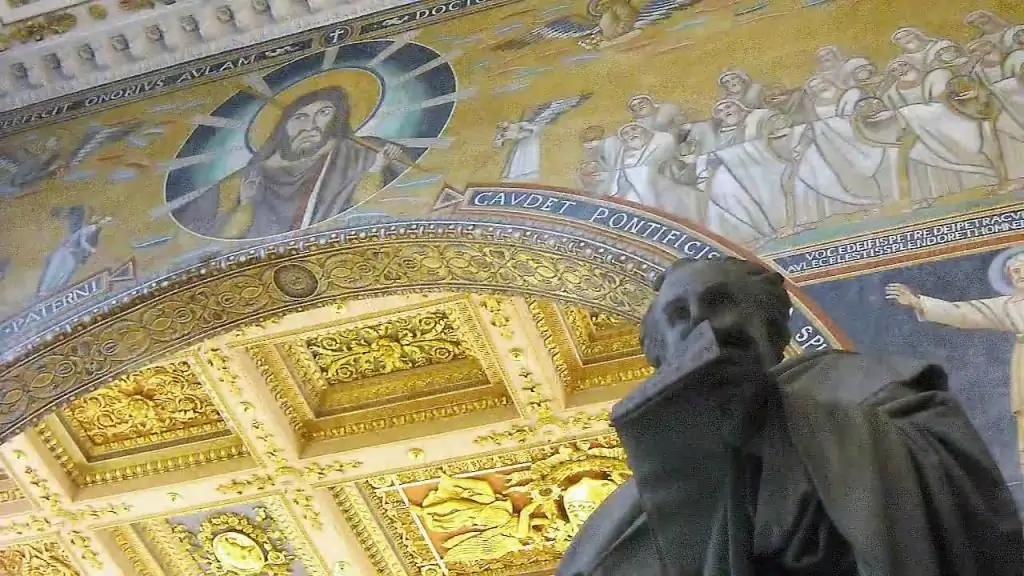
Summarize
The Cathedral of St. Peter and Paul in Rome is a temple with unusually bright energy. It is definitely worth a visit for those who find themselves in Rome.






